Living with a Model A Ford? Easier—and more fun—than you’d imagine
Getting a true picture of living with a classic is not easy. A seller will paint one picture—likely a rosy one—while a shop or club member might offer something more specific. And when comes to a pre-war car, there are even more question marks. Can I drive it in bad weather? Will it keep up with traffic? Can I even work on it or find parts?
Take the Model A Ford, perhaps the best, most widespread example of a pre-war automobile that remains in regular use among vintage enthusiasts. These cars are 90+ years old, which means hardly anybody alive remembers them as a fixture of ordinary traffic. They’ve always been an anachronism. At the same time, a Model A is a surprisingly durable, versatile, and reliable machine that can fit nicely into an owner’s life. I know this because I own one, but don’t just take it from me. Longtime owner Jonathan Klinger, Hagerty’s VP of Car Culture, has covered even more Model A miles than me. He is something of an expert in what interested A drivers should to know about maximizing enjoyment of this pre-war workhorse.
To read our detailed Ford Model A buyer’s guide, click here.
For those of you relatively new here, my 1930 coupe entered my life nearly four years ago. It has been an off-and-on DIY project sprinkled with memorable short trips and general driving. Klinger for his part, can reflect on his tens of thousands of miles behind the wheel of his 1930 two-door Model A sedan, having daily driven it for a full calendar year in Northern Michigan. He documented the stunt on a blog nearly a decade ago.
So what is regular use of a pre-war vehicle Model A really like?
Not as challenging as you might think. One of the beautiful realities of the Model A is that nearly five million of them rolled off Ford assembly lines between 1928 and 1931. Many of them survived, and a strong a following has developed over years. This means that the car’s knowledge base is enormous, including deep insight into the best strategies for setting up and maintaining the cars for regular driving on modern roads.
The vast majority of Model As on the market fall somewhere between the condition of Klinger’s sedan and my coupe. There’s a reason for that. An original Model A requires nerves of steel to enjoy in modern traffic. The functional top speed of an A is 45-50 mph, and at that point you are very close to outdriving the limits of the car’s steering and brakes. Most owners will upgrades or changes, small and large. For instance, Klinger completed several roadtrips before he installed a Mitchell overdrive. Suddenly, the car was not only better on secondary roads but also better around town. Why? Because the overdrive allowed for a “second high” gear in which the transmission is in second and the overdrive engaged to keep the low-revving engine in a happy rpm range at city speed. Not a cheap upgrade, but those looking to really drive the thing might value utility over originality. Depending on the owner and the car, different people will land on different places on this spectrum. An all-original, beautifully restored Model A is very specific experience, but a ’60s Mustang is thirty years more sophisticated.

In 2022, the biggest performance deficit you’ll find in stock Model A is its brakes. In vehicles of this age, the situation can involve parts that in some cases are almost a century old. Beyond that, the purely mechanical design is fundamental outdated and archaic. That doesn’t mean they’re bad or unusable, however. Best practice is to be diligent with adjusting and maintaining these critical components. While mechanical brakes can seem scary, there is plenty of stopping power behind that firm pedal, which does require more leg strength to operate.
Adjusting the brakes demands several test runs around the block, which allows dialing in the rods and actuators so that the brakes engage evenly and eliminates a pull or unintended evasive maneuver when pressing the brake pedal. A nice high and firm pedal comes from combination of the proper drums—cast steel, not the factory stamped—and proper setup. The latter is available with the assistance of multiple club publications and workshop manuals that have outlined the procedure. There isn’t a well-sorted Model A out there that couldn’t lock all four wheels in a panic stop.

Assuming the brakes are good, it’s the tires that start to really matter. And rubber is not the place to cheap out, Klinger says. Radials, though not period-correct, are the way to go. “Switching to radial tires might change the appearance of the car, but the resulting ride is well worth the visual compromise.” I very much agree. Klinger recommends Excelsior Sport Radial tires, which nicely balance modern construction with the look of a classic bias-ply.
Why move away from bias-plys? Because they tend to follow the cracks in the road, which makes the car feel more unstable. Consider that, compared to a modern car, driving a Model A is like steering a tractor on stilts. Suspension is fairly soft and the chassis so flexible you can nearly feel it twist on angled approach to a parking deck entrance ramp. The feeling of control is important here.
The transmission and its shifting behavior is fairly tractor-like, as well. After all, the Model A has a whopping 65-pound flywheel. Shifts require significantly more patience than most drivers are accustomed to. Here’s why: Model As have non-synchronized transmissions, which means disparity between speed (rpm) of the engine and that of the transmission output shaft when engaging a gear. Shifting can be done via single clutch disengagement and a careful touch, letting the revs fall to the right place on the tach, but best practice is to double-clutch both up and downshifts. On a car with a stock (heavy) flywheel, the speed at which the engine decelerates to the point of a clean shift can be a limiting factor in smoothness and acceleration. That’s an unchangeable part of the original Model A operation.
A lighter flywheel is a cheat code. For his two-door, Klinger went this route to improve performance without having to crack open the engine. The result was quicker acceleration and, because of less rotating mass, a wider window to achieve a seamless shift. I personally enjoy the heavier flywheel, because the focus necessary for good shifting is part of the experience I want. Try both before making up your mind.
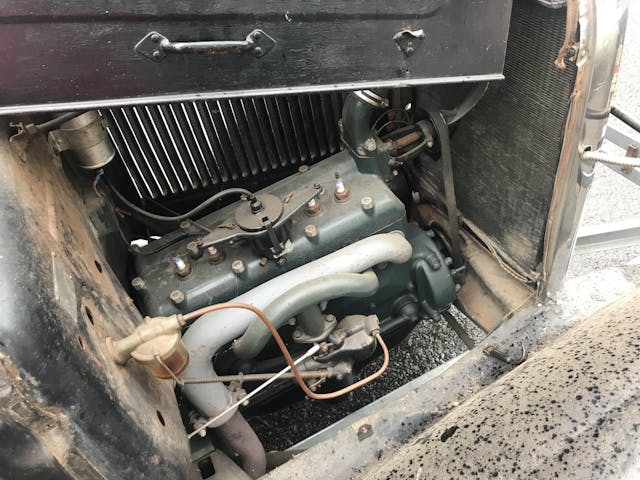
Stock Model A steering is similarly heavy. Most drivers accustomed to over-boosted power steering have little understanding of what’s going on when attempting to steer 2200-ish pounds using an unassisted setup and narrow front tires. It quickly becomes evident that fighting the steering wheel is less miserable with the front wheels rolling. “Once underway, the steering is absolutely manageable,” said Klinger. “Even with wear in the system that makes them a little tighter, most cars can still be directed with one hand on the wheel once you have some momentum.”
For a car as ubiquitous as the immortal A, it has some funky quirks. For one, the windshield ends quite low and the header restricts the view of overhead signals or signage, so it’s common to see driver’s craning their necks and looking up at red lights to see when they turn green. The seating position is a little awkward and lacking in back support for multi-state trips, but not uncomfortable once you factor in the shorter travel distances that were the norm when the car was built. Drivers seeking more legroom—which also equates to more belly room considering the fixed steering wheel location—should shop for coupes, which came from the factory with adjustable seats. Could someone savvy with tools could modify the sedan’s seat mounting? Sure, but it then wouldn’t remain even with the factory height of the passenger seat.
Klinger and I agree that the Model A offers a driving experience like few others. There is also something about the feel of a pre-war brute puttering down a backroad that keeps me reaching for the keys during the summer months, despite other cars in my stable that are faster (and easier) to drive. From the starting sequence to getting the downshifts just right, a Model A rewards a driver’s focus, attention, and effort. All those people burning humongous stacks of cash to be launched into space? Laughable. In the right environment, being behind the wheel of an A is affordable time travel.
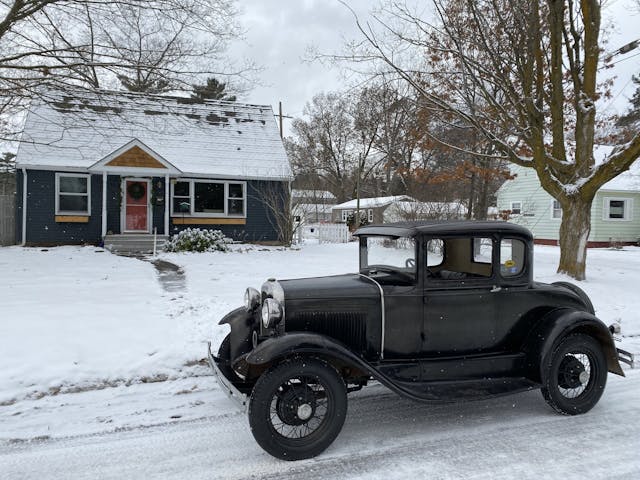
Check out the Hagerty Media homepage so you don’t miss a single story, or better yet, bookmark it.


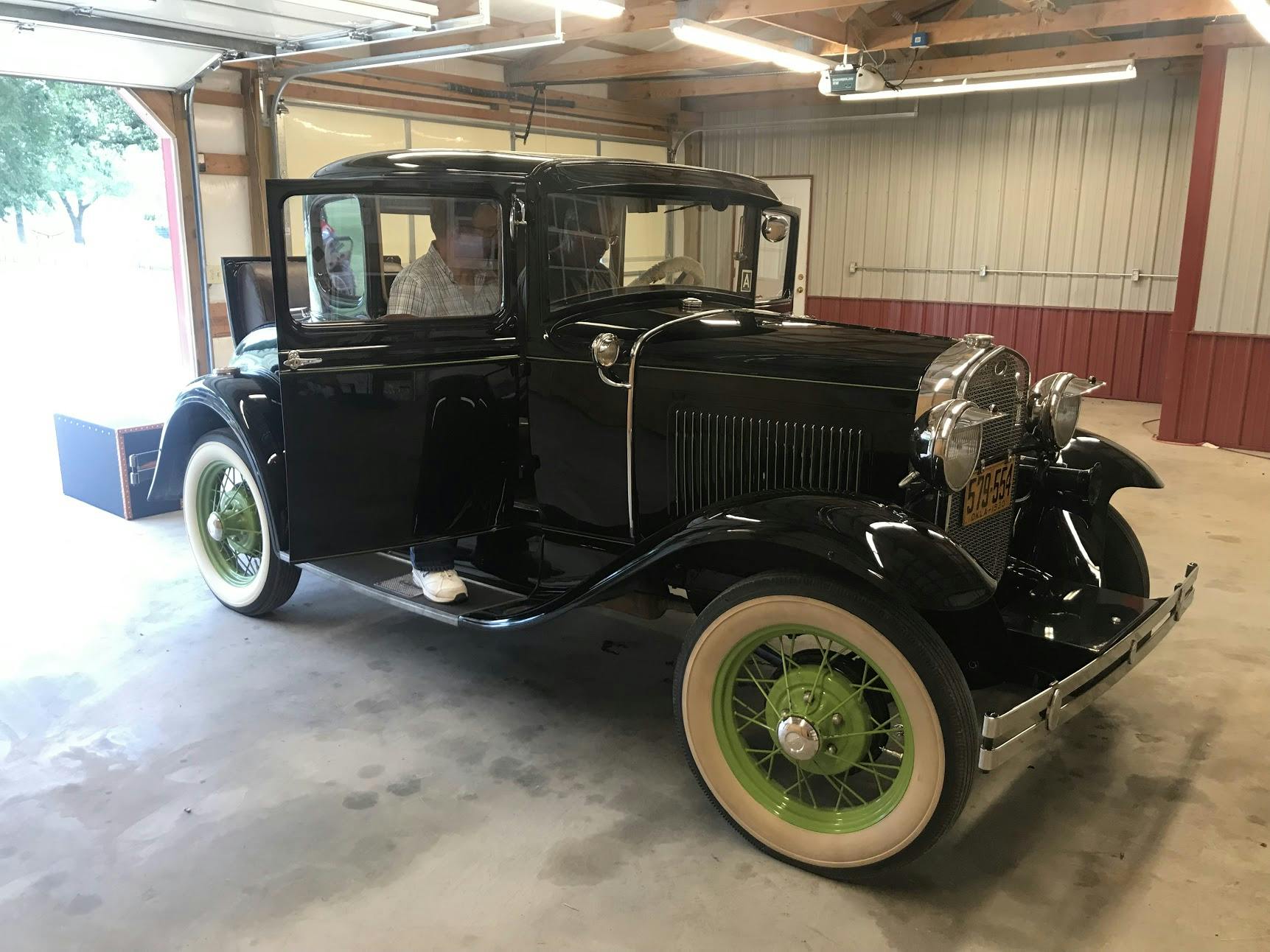
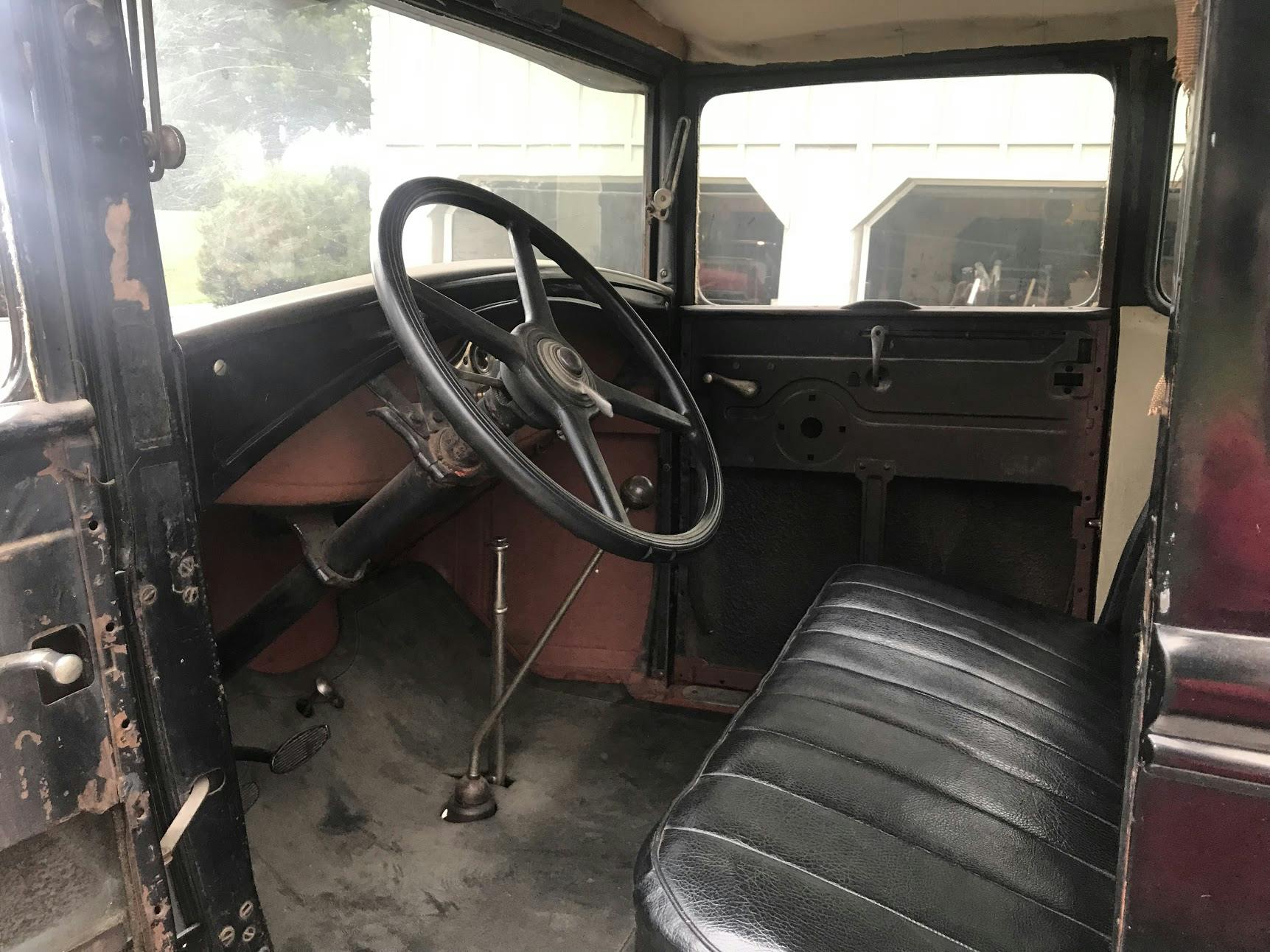
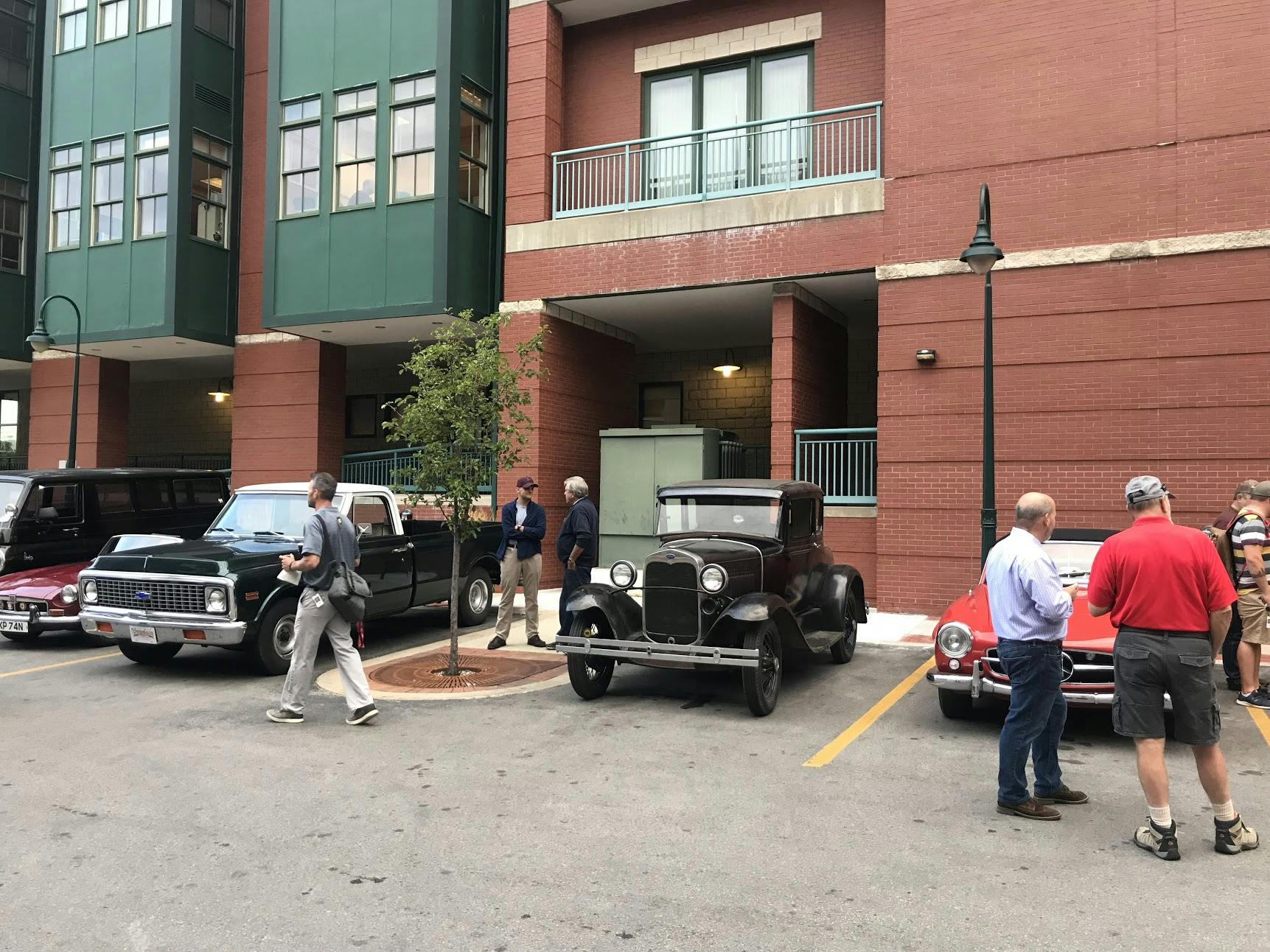


One of my buddies recently bought two Model A’s at an auction. He got the first largely complete one running (with some assistance from me), and is ‘refreshing’ the second one for personal use, which I am also assisting with. [This is where it would be nice to be able to post photos like the good ol’ Community days]
It is remarkable how rudimentary these machines are, which do all of the basic things today’s cars do. My buddy alleges he is going to at least quasi-daily drive it when done. I have expressed concerns about driving something around with skinny tires, mechanical brakes, and a top speed around 40 on modern road. This guy doesn’t have a good track record with finishing things, so we’ll see where things go.
Have a 30 Tudor. Mechanical’s are original except for Pertronic Ignition and Electric fuel pump with added fuel tank. Interior has black vinyl. Rest is pretty much original. Had to repaint since PA at that time required body to be in very good condition for antique plates. Shame. Some stuff left to do. Ready to sell. Need space to finish my 55 T-Bird and 65 Comet Convertible.
First car was a ’29 Model A Sport coupe – fabric top with landau irons that didn’t fold down. Dad wouldn’t let me drive it until I turned 16, but we had a shade over the top of it in the back yard so I could work on it when I wanted (which was all the time). Taught me a lot, this 30 year old car at the time – crystallized bolts, steel bolts into aluminum parts, making a new header over the windshield out of white oak, also disadvantage of overspeed on the engine – babbit bearings don’t like speed. Fortunately at the time, there was a shop that could repour babbit, so the engine came back to life. Only let me down a couple of times – got to my buddy’s house to pick him up for school, and the car wouldn’t start. Towed it home after school only to find that the ignition switch had dropped a contact. Quick fix! The second time was more serious – pulled into the high school parking lot and had smoke coming out of the hood. The wiring in the bulb at the bottom of the steering column shorted out and was stopped by disconnecting the battery. I’d upgraded the headlights to sealed beam, and they were drawing much too much current. Remedy was to put in a relay for the headlights. Also wouldn’t start one cold morning as the battery was dead, so I pulled out the crank and it started right off. Dad made me get rid of it when I got to college, regrefully, but we made big money on it – we bought it for $100, and sold it for $200. Try to find one for that price now!!!
Nice article. I got my first A at 16 in 1973, she didn’t run but I got her working enough to pick up my sister from school in it once. This has led to years of an enjoyable hobby with many hours behind the wheel. Yep, Kyle has caught the essence that it sometimes takes nerves of steel and strong legs to stop but it truly is a time travel experience that I would not willingly trade. Though I have indeed left strips of rubber and successfully avoided any accidents; truly some modern adaptations, as mentioned, are quite worthwhile (seat belts, cast iron drums, turn signals, etc.) to thwart the increasingly ignorant people who appear to assume all vehicles on the road (including semi-trucks) behave the same.
The one thing that was being said about the low clearance of the model A and being unable to see traffic lights is unbelievably true. But I purchased this little half moon shape magnifying glass which I forgot what it is called that mounts right on the dashboard for the magnet but it bends the light so that you can actually see a somewhat distorted version of the traffic lights but unless your color blindness works great without having to crank your head out the window or bend it down like Quasimodo to be able to see the lights change.